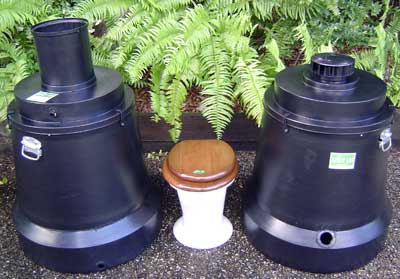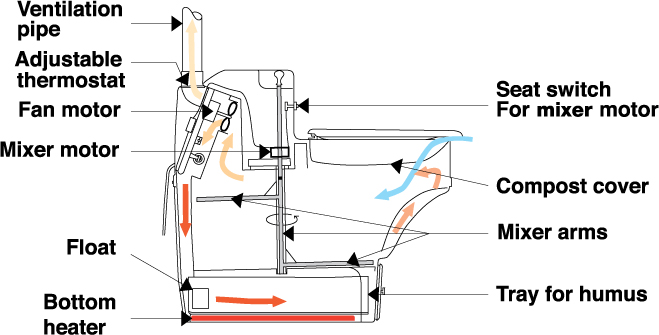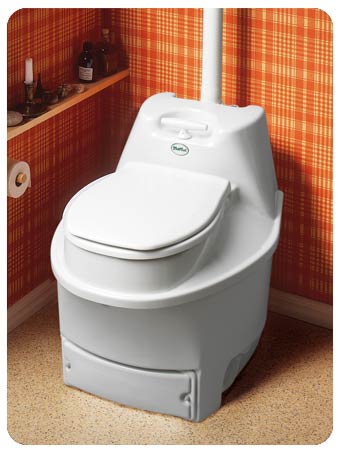There are six kinds of composting toilets:
Self-contained composting toilets
Here, composting unit and the toilet form one combined unit. Usually, such units are a bit higher than their flush toilet counterparts, and so demand a step up stool for users to reach up and sit on the unit.


Remote type composting toilets
These toilets are also called Centralized Composting Toilets. Here, the toilet is set apart from the composting unit but is connected to a dry toilet chamber situated elsewhere. This could also be in a basement situated just below the toilet.
Batch composting toilets
In this kind of dry toilet, waste collects and is composted in two sealed containers, or more. They are set on a rotating ed containers, mounted on a rotating circular conveyer belt. A full container is taken off the belt and taken to another location to complete the composting process, which normally takes about five to six weeks. The material is placed in the ground and covered and an empty bin is set on the carousel or conveyer belt to be filled up. The cycle continues in this way until all the bins are filled.

Owner-built composting toilets
One can either buy a composting toilet or build one. The latter is comparatively inexpensive, though having them approved by health agencies could prove a big challenge.
Active composting toilets
These work by remixing, aeration and heating. Their features comprise fans, thermostat-regulated heaters, tumbling drums and automatic mixers, which enhance quicker odor-free composting.

Passive composting toilets
Unlike its active counterpart, this kind of dry toilet depends on its natural surroundings. It works well with gravity, good surrounding temperature and the right shape of the composting cell which jointly work to produce good composting.
Why use the Dry Composting Toilet system?
This system is replete with a bouquet of benefits, some of which are:
- It is a healthy method of waste disposal since it eliminates all those microbes that are harmful to us
- Compost produced by this method is not life-threatening to us or to our environment
- It saves water—in fact, it reduces your water consumption by one-third
- It is odorless
- It is inexpensive to install and maintain and can function in all kinds of temperatures and in cities and villages
- It is available in a variety of models
- It is based on a very good sustainable technology
- By creating compost, it sends back nutrients to the soil, which in turn negates the use of chemical fertilizers
- Dry toilets process human waste on-site, thereby reducing the need for a sewage system and the amount of sewage that is taken out of water bodies and oceans each day.
- If you live in a remote area where a sewage system is still not established, a composting toilet can fill in that need very well
- Organic matter such as food bits can also be added to the composting toilet